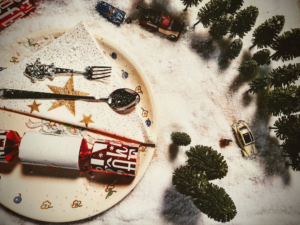While England doesn’t have an officially designated national animal, the lion holds a powerful symbolic presence within English culture and history.
The lion stands as the national animal of England, symbolizing bravery, strength, and nobility. This association has deep historical roots, intertwining with England’s royal heritage and cultural identity.
Historical Significance of the Lion in England
The lion’s prominence in English symbolism dates back to the Middle Ages. King Richard I, known as Richard the Lionheart, adopted the lion as part of his royal coat of arms in the 12th century, solidifying its association with English royalty and valor. This emblematic use of the lion continued through subsequent monarchs, reinforcing its status as a symbol of England’s strength and courage.
The Lion in Heraldry and National Emblems
In English heraldry, the lion is a central motif. The Royal Coat of Arms of the United Kingdom features three golden lions passant guardant on a red shield, representing England. This emblem is prominently displayed on official documents, government buildings, and the royal standard, underscoring the lion’s enduring role as a national symbol.
Cultural and Sporting Associations
Beyond heraldry, the lion’s symbolism permeates various aspects of English culture. In sports, particularly football, the emblem of three lions is used by the Football Association, symbolizing unity and pride in English football. This association further solidified the lion’s place as a symbol of English pride and unity.
The Lion in Modern Context
Today, the lion continues to embody the values of bravery and strength in England. Its image is utilized in national celebrations, official insignia, and cultural events, reflecting its deep-rooted significance in English identity.
The Lion in English Heraldry:
Royal Symbolism: The lion has been a prominent symbol of English royalty for centuries. It features prominently on the Royal Arms of England, where three golden lions passant guardant (walking and facing the viewer) are depicted on a red background.
Historical Significance: The use of the lion in English heraldry dates back to the 12th century, when Richard I, known as “Richard the Lionheart,” adopted it as his personal emblem.
Representing Power and Strength: The lion, with its strength, courage, and regal bearing, has come to symbolize power, strength, and nobility – qualities often associated with English kings and queens.
The Lion in English Culture:
Sporting Symbolism: The lion is a prominent symbol in English sports, particularly in football. The England national football team is often referred to as “The Three Lions,” a direct reference to the three lions on the English coat of arms.
Cultural Significance: The lion has been featured in numerous works of English literature and art, further solidifying its place in the national consciousness.
The Barbary Lion: A Connection to the Past
Historical Presence: While lions are not native to England, the Barbary lion, a now-extinct subspecies of lion, once roamed parts of North Africa.
Royal Menagerie: English monarchs, particularly during the medieval period, kept lions in their menageries, further connecting the animal with English royalty.
The Lion Today:
Endangered Species: The lion is currently classified as “Vulnerable” on the IUCN Red List, facing threats such as habitat loss, poaching, and human-wildlife conflict.
Conservation Efforts: Organizations are working to protect lion populations in Africa and Asia through conservation efforts.
FAQs
What is the national animal of England?
While England doesn’t have an officially designated national animal, the lion is widely considered the unofficial national animal.
Why is the lion associated with England?
Royal Heraldry: The lion has been a prominent symbol in English heraldry for centuries. It appears on the Royal Coat of Arms of England, representing strength, courage, and royalty.
Historical Significance: Lions, though not native to England, were kept in menageries at the Tower of London during medieval times, further solidifying their connection to English royalty.
Sporting Symbolism: The lion is a prominent symbol in English sports, particularly in football, where it’s often used as a mascot for the England national team.
Are there any other animals associated with England?
The bull: The bull is another animal associated with England, particularly in the context of bullfighting, which was popular in England during the Tudor period.
The badger: The badger is a native British animal and has become a symbol of strength and resilience.
What are the characteristics of a lion that resonate with English culture?
Strength and Power: The lion is seen as a symbol of strength, power, and courage, qualities that have been associated with England throughout history.
Royalty and Nobility: The lion’s association with royalty and nobility further strengthens its connection to English culture and history.
National Pride: The lion serves as a symbol of English national pride and identity.
How is the lion depicted in English culture?
Heraldry: The lion is prominently featured on the Royal Coat of Arms of England and is a common motif in English heraldry.
Art and Literature: Lions appear in numerous works of English art and literature, including paintings, sculptures, and literature.
Sports: The lion is a prominent symbol in English sports, particularly in football, where it’s used as a mascot for the England national team.
Are there any other countries that use the lion as their national animal?
Yes, several other countries use the lion as their national animal, including:
Belgium
The Netherlands
Luxembourg
India
Senegal
What is the conservation status of lions?
Lions are currently listed as Vulnerable on the IUCN Red List. Threats to their survival include habitat loss, human-wildlife conflict, and illegal hunting.
How can I learn more about lions?
Visit zoos and wildlife sanctuaries: Observe lions in a safe and controlled environment.
Read books and articles: Learn about the biology, behavior, and ecology of lions.
Watch documentaries: Explore the lives of lions in the wild through documentaries.
Support conservation efforts: Donate to organizations that are working to protect lions and their habitats.
Accordingly
While not officially designated as the national animal, the lion holds a significant place in English culture and history. Its association with royalty, its presence in English heraldry, and its prominent role in English sports have cemented its status as a powerful and enduring symbol of England.
To read more,Click Here.





